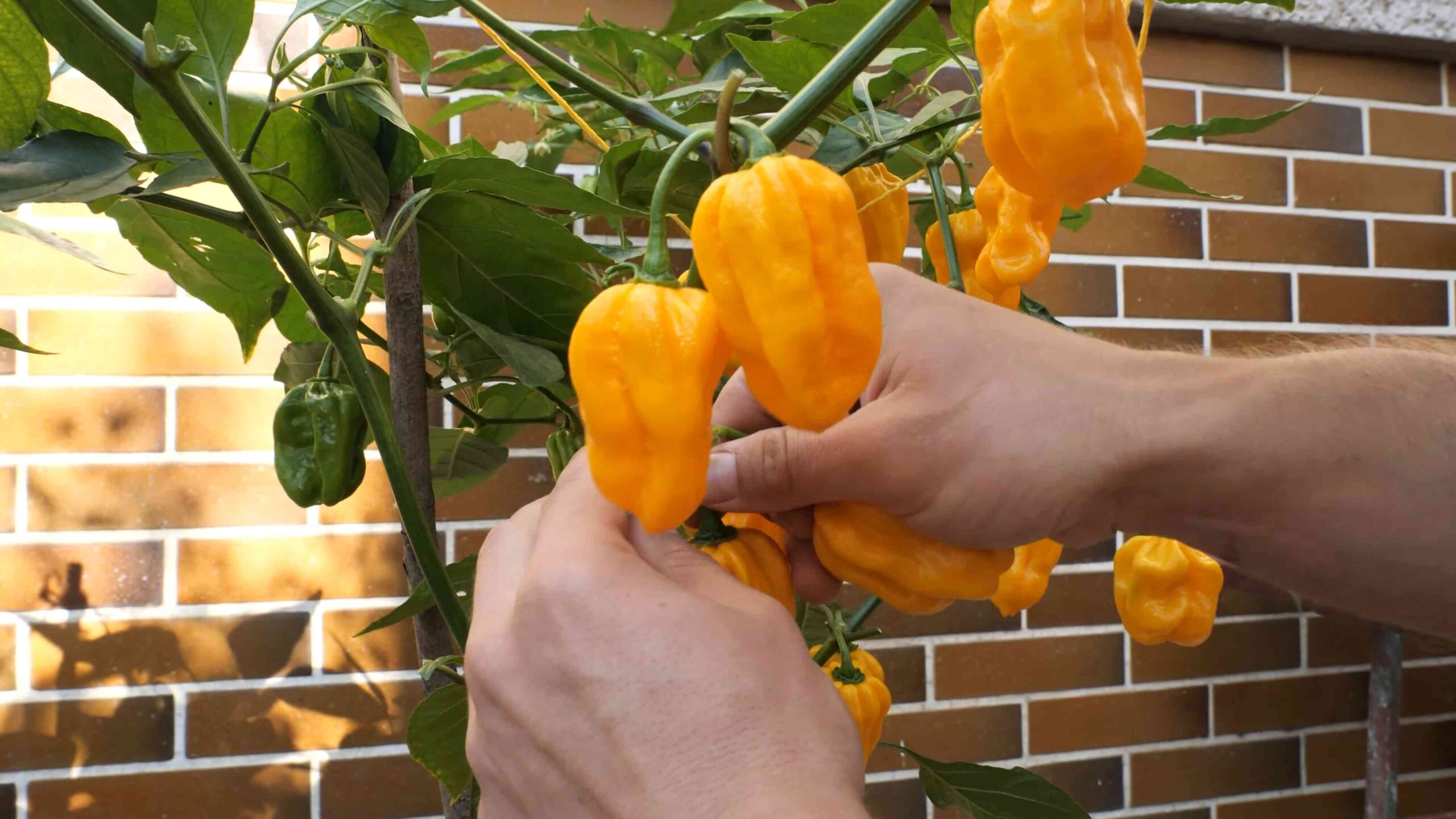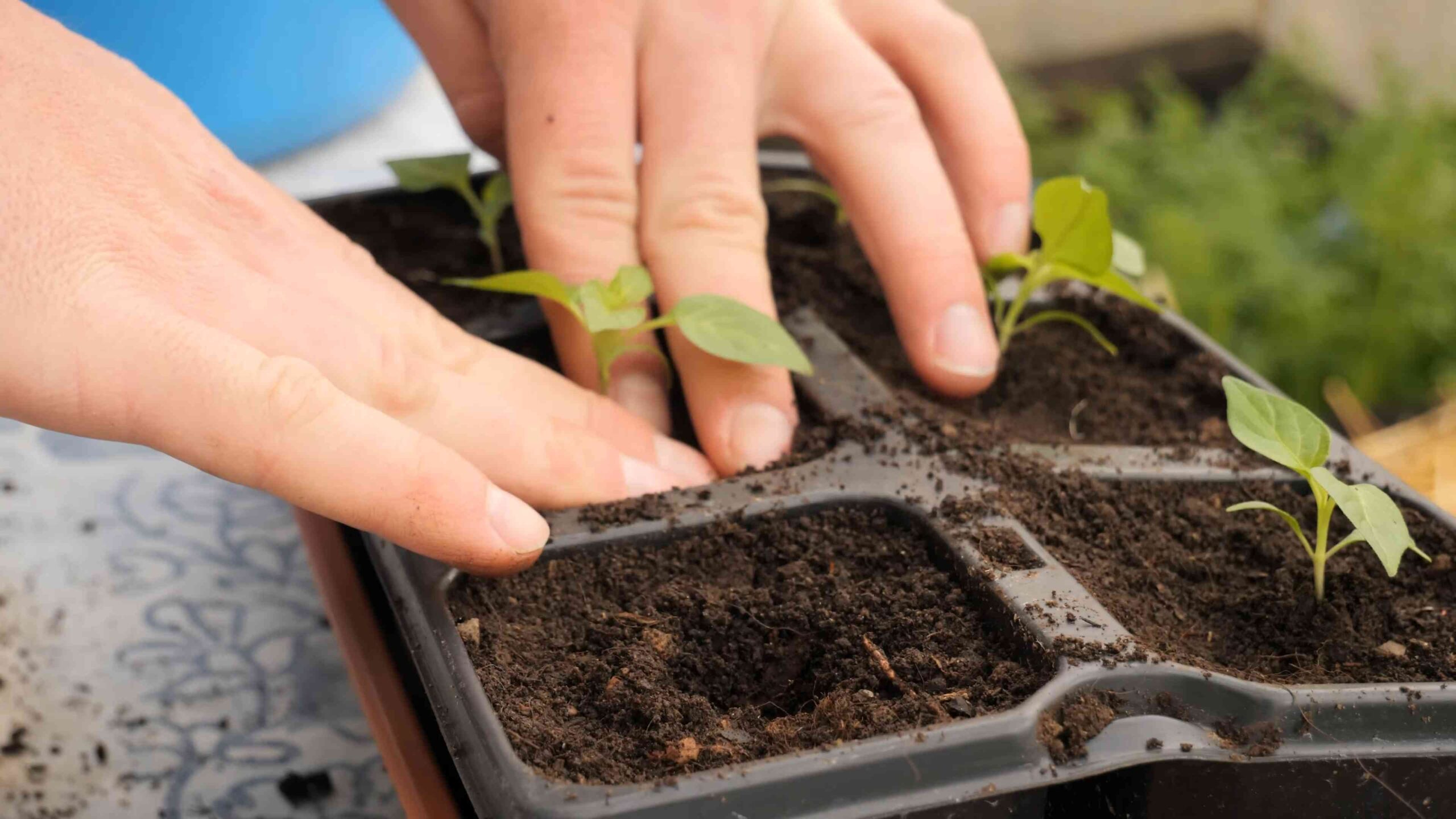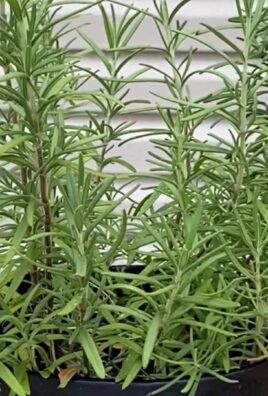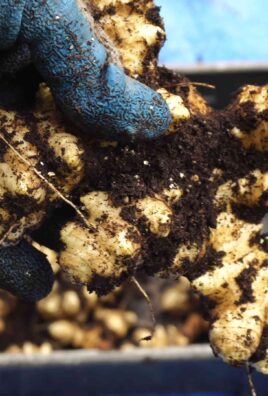Growing Yellow Habanero Peppers can seem daunting, but trust me, with a few clever tricks and a little DIY spirit, you can cultivate these fiery delights right in your own backyard! Forget those bland, store-bought peppers – imagine the satisfaction of harvesting vibrant, sunshine-yellow habaneros, bursting with flavor and ready to spice up your favorite dishes.
For centuries, peppers like the habanero have been cherished in cultures around the globe, not just for their culinary uses, but also for their medicinal properties and even their symbolic significance. From the ancient Aztecs to modern-day Caribbean cuisine, the habanero’s intense heat has added a unique dimension to food and traditions.
But why should you embark on this pepper-growing adventure? Well, besides the sheer joy of nurturing life, growing Yellow Habanero Peppers yourself guarantees freshness, allows you to control the growing process (no nasty pesticides!), and saves you money in the long run. Plus, let’s be honest, bragging rights are definitely a perk! This DIY guide will equip you with simple, effective techniques to overcome common challenges and ensure a bountiful harvest. Get ready to turn your garden into a hot pepper haven!

Growing Yellow Habanero Peppers: From Seed to Spicy Harvest!
Hey fellow chili enthusiasts! I’m super excited to share my tried-and-true method for growing vibrant, fiery yellow habanero peppers right in your own backyard (or balcony!). These little sunshine bombs pack a serious punch, and there’s nothing quite like the satisfaction of harvesting your own homegrown heat. Let’s dive in!
Getting Started: Seeds and Supplies
Before we get our hands dirty, let’s gather everything we need. Trust me, being prepared makes the whole process smoother and more enjoyable.
* Habanero Seeds: Obviously! Make sure you’re getting seeds from a reputable source. I’ve had good luck with online seed companies specializing in peppers. Look for “Yellow Habanero” or “Golden Habanero” varieties.
* Seed Starting Trays or Pots: These are essential for starting your seeds indoors. I prefer trays with individual cells to minimize root disturbance when transplanting.
* Seed Starting Mix: This is a light, sterile soil mix specifically designed for seedlings. Don’t use regular garden soil – it’s too heavy and can harbor diseases.
* Heat Mat (Optional but Recommended): Habaneros love warmth! A heat mat will significantly improve germination rates.
* Grow Lights (Optional but Recommended): If you don’t have a sunny windowsill, grow lights will provide the necessary light for healthy seedling growth.
* Small Pots (3-4 inch): For transplanting seedlings before moving them outdoors.
* Potting Mix: A good quality potting mix for containers.
* Gardening Gloves: To keep your hands clean and protected.
* Watering Can or Spray Bottle: For gentle watering.
* Fertilizer: A balanced fertilizer for seedlings and a fertilizer high in phosphorus and potassium for mature plants.
* Garden Stakes or Cages: To support the plants as they grow.
* Patience: Habaneros can be a bit slow to germinate and grow, so don’t get discouraged!
Phase 1: Starting Your Seeds Indoors (8-10 Weeks Before Last Frost)
Habaneros need a long growing season, so starting them indoors is crucial, especially if you live in a cooler climate. I usually start mine about 8-10 weeks before the last expected frost.
1. Prepare Your Seed Starting Trays: Fill your seed starting trays or pots with seed starting mix. Gently tap the trays to settle the mix.
2. Sow the Seeds: Make a small indentation (about 1/4 inch deep) in the center of each cell or pot. Place 2-3 seeds in each indentation. This increases your chances of at least one seed germinating.
3. Cover the Seeds: Gently cover the seeds with seed starting mix.
4. Water Thoroughly: Water the trays or pots thoroughly using a spray bottle or watering can with a gentle nozzle. You want the soil to be moist but not soggy.
5. Provide Warmth: Place the trays on a heat mat set to around 80-85°F (27-29°C). This will significantly speed up germination.
6. Maintain Moisture: Cover the trays with a humidity dome or plastic wrap to help retain moisture. Check the soil daily and mist with water if it starts to dry out.
7. Wait Patiently: Habanero seeds can take anywhere from 1-3 weeks to germinate, so be patient!
8. Provide Light: Once the seedlings emerge, remove the humidity dome or plastic wrap and place the trays under grow lights or in a sunny windowsill. If using grow lights, keep them a few inches above the seedlings and provide 14-16 hours of light per day.
9. Thin the Seedlings: Once the seedlings have their first true leaves (the second set of leaves that appear after the initial seed leaves), thin them out by snipping off the weaker seedlings at the soil line, leaving only the strongest seedling in each cell or pot.
10. Fertilize Gently: Once the seedlings have a few sets of true leaves, start fertilizing them with a diluted balanced fertilizer (like a 20-20-20) every 1-2 weeks. Follow the instructions on the fertilizer label.
Phase 2: Transplanting and Hardening Off
Once the seedlings are a few inches tall and have a good root system, it’s time to transplant them into larger pots and start hardening them off before moving them outdoors.
1. Transplant to Larger Pots: Gently remove the seedlings from their seed starting trays or pots and transplant them into 3-4 inch pots filled with potting mix. Be careful not to damage the roots.
2. Water Thoroughly: Water the transplanted seedlings thoroughly.
3. Harden Off the Seedlings: This is a crucial step to acclimate the seedlings to outdoor conditions. Start by placing the seedlings outdoors in a sheltered location for a few hours each day, gradually increasing the amount of time they spend outdoors over the course of a week or two. Protect them from direct sunlight and strong winds initially.
4. Monitor the Weather: Keep an eye on the weather forecast and bring the seedlings indoors if there is a risk of frost or extreme temperatures.
Phase 3: Planting Outdoors
Once the danger of frost has passed and the soil has warmed up, it’s time to plant your habanero peppers outdoors.
1. Choose a Sunny Location: Habaneros need at least 6-8 hours of direct sunlight per day.
2. Prepare the Soil: Amend the soil with compost or other organic matter to improve drainage and fertility. Habaneros prefer well-drained soil.
3. Space the Plants: Space the plants about 18-24 inches apart.
4. Dig the Holes: Dig holes that are slightly larger than the root balls of the seedlings.
5. Plant the Seedlings: Gently remove the seedlings from their pots and place them in the holes. Make sure the top of the root ball is level with the surrounding soil.
6. Fill the Holes: Fill the holes with soil and gently firm the soil around the plants.
7. Water Thoroughly: Water the newly planted seedlings thoroughly.
8. Add Mulch: Apply a layer of mulch around the plants to help retain moisture, suppress weeds, and regulate soil temperature.
Phase 4: Ongoing Care
Once your habanero peppers are planted outdoors, they’ll need regular care to thrive.
1. Watering: Water the plants regularly, especially during hot, dry weather. Habaneros prefer consistently moist soil, but avoid overwatering, which can lead to root rot. I usually water deeply when the top inch of soil feels dry.
2. Fertilizing: Fertilize the plants every 2-3 weeks with a fertilizer high in phosphorus and potassium. These nutrients are essential for flower and fruit production. I like to use a tomato fertilizer or a fertilizer specifically formulated for peppers.
3. Support: As the plants grow, they may need support to prevent them from falling over. Use garden stakes or cages to support the plants.
4. Pest Control: Keep an eye out for pests such as aphids, spider mites, and whiteflies. If you notice any pests, treat them with an appropriate insecticide or insecticidal soap. I prefer to use organic pest control methods whenever possible.
5. Pruning (Optional): Pruning can help improve air circulation and encourage bushier growth. You can prune off any suckers (small shoots that grow from the base of the plant) or any yellowing or diseased leaves.
6. Weed Control: Keep the area around the plants free of weeds. Weeds can compete with the plants for nutrients and water.
Phase 5: Harvesting Your Yellow Habaneros
The moment you’ve been waiting for! Harvesting your own homegrown habaneros is incredibly rewarding.
1. When to Harvest: Yellow habaneros are typically ready to harvest when they turn a vibrant yellow color and are firm to the touch. They should also be relatively easy to pull off the plant.
2. How to Harvest: Use pruning shears or scissors to cut the peppers off the plant, leaving a small stem attached.
3. Handle with Care: Habaneros are very hot, so be careful when handling them. Wear gloves to protect your hands from the oils that can cause skin irritation.
4. Storage: Store the harvested peppers in a cool, dry place. You can also freeze them for longer storage.
Extra Tips for Super Spicy Success!
* Soil Temperature: Habaneros thrive in warm soil. If your soil is cool, consider using black plastic mulch to warm it up.
* Epsom Salts: Some gardeners swear by adding Epsom salts to the soil to help boost pepper production. Epsom salts contain magnesium, which is essential for

Conclusion
So, there you have it! Growing your own yellow habanero peppers isn’t just a gardening project; it’s an adventure in flavor, a testament to your green thumb, and a gateway to a world of culinary possibilities. We’ve walked you through the process, from selecting the perfect seeds to nurturing your plants and finally harvesting those fiery jewels. But why is this DIY trick a must-try?
Firstly, the taste. Store-bought habaneros, while convenient, often lack the vibrant, complex flavor that homegrown peppers possess. When you cultivate your own, you control the growing conditions, ensuring that your peppers develop their full potential, resulting in a superior taste experience. Imagine the intense heat, the fruity undertones, and the satisfying crunch – all from peppers you nurtured from tiny seeds.
Secondly, the satisfaction. There’s an unparalleled sense of accomplishment that comes from growing your own food. Watching a tiny seed sprout, develop into a plant, and eventually bear fruit is a rewarding experience that connects you to nature and provides a tangible sense of achievement. Plus, you can brag to all your friends about your amazing **yellow habanero peppers**!
Thirdly, the control. You know exactly what goes into your peppers. No pesticides, no questionable fertilizers – just good old-fashioned care and attention. This is especially important if you’re concerned about the quality and safety of your food.
But the fun doesn’t stop there! Feel free to experiment with different variations. Try growing your peppers in containers if you have limited space. Experiment with different soil mixes to see which yields the best results. Consider companion planting with herbs like basil or rosemary to enhance the flavor of your peppers and deter pests. You could even try fermenting your peppers to create a delicious and complex hot sauce.
Here are some suggestions to get you started:
* For a milder flavor: Harvest your peppers slightly earlier, when they are still a lighter shade of yellow.
* For a spicier kick: Allow your peppers to fully ripen on the plant, turning a deep, vibrant yellow.
* For a unique twist: Try smoking your harvested peppers for a smoky, complex flavor that’s perfect for sauces and rubs.
We wholeheartedly encourage you to embark on this exciting journey of growing your own yellow habanero peppers. It’s a rewarding experience that will not only enhance your culinary creations but also connect you to the natural world. Don’t be afraid to experiment, learn from your mistakes, and most importantly, have fun!
Once you’ve harvested your first batch of homegrown habaneros, we’d love to hear about your experience! Share your tips, tricks, and favorite recipes in the comments below. Let’s create a community of passionate pepper growers and inspire others to discover the joy of growing their own food. Happy growing!
Frequently Asked Questions (FAQ)
What is the ideal climate for growing yellow habanero peppers?
Yellow habanero peppers thrive in warm climates with plenty of sunshine. They require a long growing season, typically 100-120 days from transplanting to harvest. The ideal temperature range is between 70°F and 85°F (21°C and 29°C). They are sensitive to frost, so it’s crucial to protect them from cold temperatures. If you live in a cooler climate, consider starting your seeds indoors and transplanting them outdoors after the last frost. You can also use row covers or a greenhouse to extend the growing season.
How often should I water my yellow habanero pepper plants?
Watering frequency depends on several factors, including the climate, soil type, and size of the plant. Generally, you should water your pepper plants deeply whenever the top inch of soil feels dry to the touch. Avoid overwatering, as this can lead to root rot. During hot, dry weather, you may need to water your plants daily. In cooler weather, you can reduce the watering frequency. Using a moisture meter can help you determine the moisture level of the soil and avoid over or under watering. Mulching around the base of the plants can also help retain moisture and reduce the need for frequent watering.
What type of soil is best for growing yellow habanero peppers?
Yellow habanero peppers prefer well-draining soil that is rich in organic matter. A slightly acidic to neutral pH (6.0-7.0) is ideal. You can amend your soil with compost, aged manure, or other organic materials to improve its fertility and drainage. Avoid heavy clay soils, as they can retain too much water and lead to root rot. If you have clay soil, consider growing your peppers in raised beds or containers with a well-draining potting mix. Adding perlite or vermiculite to the soil can also improve drainage.
What are some common pests and diseases that affect yellow habanero pepper plants?
Common pests that can affect yellow habanero pepper plants include aphids, spider mites, whiteflies, and pepper weevils. Diseases include fungal infections like powdery mildew, blossom end rot, and bacterial leaf spot. Regularly inspect your plants for signs of pests or diseases. You can use insecticidal soap or neem oil to control pests. For fungal diseases, use a fungicide specifically formulated for peppers. Blossom end rot is caused by a calcium deficiency, so ensure your soil has adequate calcium levels. Proper watering and good air circulation can also help prevent diseases.
How do I know when my yellow habanero peppers are ripe?
Yellow habanero peppers are typically ready to harvest when they turn a vibrant, deep yellow color. They should also feel firm to the touch. The time it takes for peppers to ripen depends on the variety and growing conditions. Generally, it takes about 100-120 days from transplanting to harvest. You can use pruning shears or scissors to carefully cut the peppers from the plant, leaving a small stem attached.
Can I grow yellow habanero peppers in containers?
Yes, you can successfully grow yellow habanero peppers in containers. Choose a container that is at least 5 gallons in size and has good drainage holes. Use a well-draining potting mix and provide your plants with plenty of sunlight. Container-grown peppers may require more frequent watering and fertilization than those grown in the ground. Consider using a slow-release fertilizer or liquid fertilizer to provide your plants with the nutrients they need.
How can I make my yellow habanero peppers spicier?
Several factors can influence the spiciness of your yellow habanero peppers. Stressing the plants slightly by withholding water or fertilizer can sometimes increase the heat level. However, avoid stressing the plants too much, as this can negatively impact their overall health and yield. The amount of sunlight the plants receive can also affect the spiciness. More sunlight generally leads to spicier peppers. Genetics also play a role, so choose a variety known for its high heat level.
How do I store my harvested yellow habanero peppers?
You can store your harvested yellow habanero peppers in several ways. Fresh peppers can be stored in the refrigerator for up to a week. For longer storage, you can dry, freeze, or pickle them. To dry peppers, you can use a dehydrator or string them together and hang them in a well-ventilated area. To freeze peppers, wash and dry them thoroughly, then place them in a freezer-safe bag or container. Pickling peppers is a great way to preserve them and add a unique flavor.
What are some ways to use yellow habanero peppers in cooking?
Yellow habanero peppers are incredibly versatile and can be used in a variety of dishes. They are commonly used to make hot sauces, salsas, and marinades. You can also add them to soups, stews, and chili for a spicy kick. Be careful when handling habanero peppers, as they are very hot. Wear gloves when cutting or handling them, and avoid touching your eyes or face. Start with a small amount and add more to taste. Remember that the seeds and membranes are the hottest parts of the pepper.





Leave a Comment